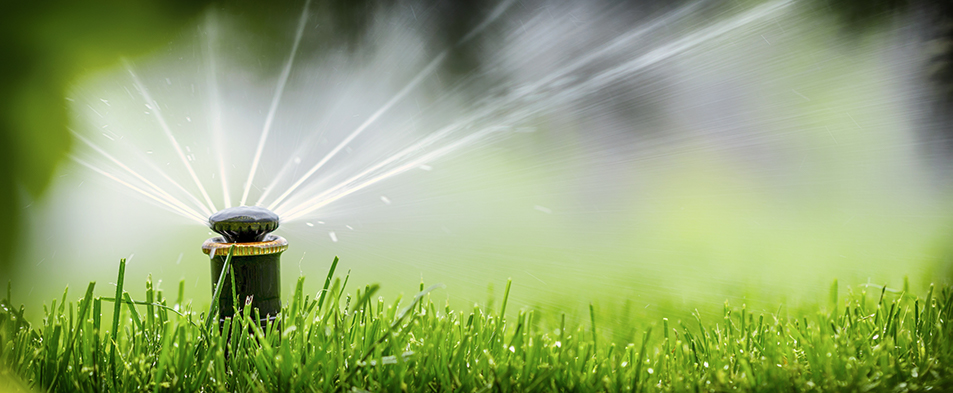There is something so idyllic about a perfectly manicured lawn. Lush greenness, soft grass, pleasant smell, and an absence of weeds not only raise the curb appeal of the home for passersby but provide an incredible incentive for kids and adults alike to abandon the television for outdoor recreation. A beautiful lawn can revive the tradition of BBQ at twilight, and the family Turkey Bowl suddenly means more than Super Bowl Sunday.
But getting that yard is easier said than done. While our team at Lawngevity is more than happy to come out and see to the health of your plants, trees, and grass (and in fact, we encourage you to call us and get a regimen started so that your lawn can thrive and flourish), we also have some handy tips for how to care for your yard on your own.
Mowing
You might not have suspected that there is a science behind mowing, but it’s true. Whereas watering and fertilizing is ultimately a question of scheduling, mowing in- volves much more than knowing what Saturday you’re going to do it. Consider the following:
• Mulching vs Bagging: Everyone is familiar with the idea of catching grass clippings in a bag, or collecting them afterward, to throw away. Bagging your grass leaves your lawn looking fresh and kempt, while also letting your grass breathe better and get full access to the sun. However, mulching (also known as grass-cycling) has its own set of benefits. Not only do you save lots of time by letting the clippings stay where they dropped, but they will decompose quickly and deposit their nutrients back into the soil. A healthy-looking lawn can come out of successfully rotating between these techniques.
• The Mower You’re Using: Every lawn mower comes with its own set of pros and cons. The typical rotary mowers that we are all familiar with today are great for deal- ing with laws of varying roughness and length, but tend to get clogged easily and can cut unevenly. Cylinder mowers and hover mowers have their benefits as well, like maneuverability and the ability to provide a more even cut, but can’t provide you with as many customizable settings as other models. We suggest using a mower that is easy to adjust the height of and can let you sharpen the blade without much trouble.
• The Height of Your Grass: This is an oft-debated question among those who tend to their own lawn. While short grass means less need to mow often, longer grass leads to a healthier lawn because longer roots can drink water lower in the dirt, meaning that the high summer sun has less of an impact on their health. Try clicking the body of the mower up a few inches and you’ll enjoy better-looking grass for longer.

Watering
Watering is perhaps the single most important thing you can do to ensure that your lawn is healthy for the long haul. But some nuances exist besides letting the sprinklers run for an hour. Here are some things to think about:
• Water in the Dark: Watering at night or the early morning is all about making sure that the water goes further when giving the lawn a drink. Watering in the heat of the day will not only cause the water to evaporate before it your roots have had a chance to get what they need, but it will end up costing you more money since your lawn will need more chances to drink than if they watered in the dark.
• Water For Longer, Less Frequently: You don’t have to water your grass every night, even during an especially hot summer; in fact, your grass is like any living thing and too much water can be harmful. Instead letting your grass drink deeply once a week, typically using 1 inch of water, will help those roots grow deeper into the ground. This will allow them to reach harder-to-get water that’s deep in the soil, meaning that your lawn will stay green even in adverse conditions.

Fertilization & Weed Control
Just as giving your grass a drink is good for the lawn, so is letting it eat. Fertilization will not only keep your yard looking healthy and green, but it can even be healthy for the environment in general. Lawngevity uses the finest fertilizer and weed kill- ers we can find, but if you are looking to treat your grass on your own, here are some tips:
• Feed Every 6-8 Weeks:The longevity of a typical fertilizer is usually about 6 weeks. After that time, all the nutrients will have been eaten and it’s time to do an- other treatment. You’ll know the fertilizer is working when the lawn comes in thick and has fewer dry spots (working in tandem with your watering schedule).
• Use the Right Tools to Spread: There are plenty of good tools to use when feed- ing your entire lawn. If you’re looking to feed a big yard, the best is usually a rotary spreader that will toss fertilizer out evenly as you walk the length and breadth of your lawn.
• Work in Tandem with Aeration: One of the best ways to get fertilizer down deep into your soil is to schedule it around aerating your lawn. By creating large holes in the grass you can get direct access to the grass’s roots system, which will help it feed better.


